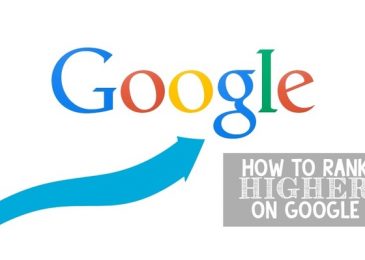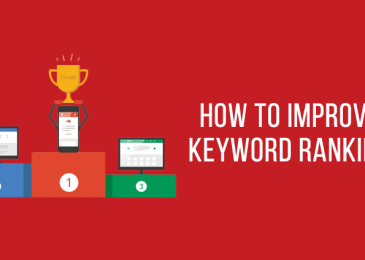Hello BigbigSEO.com Team,
I’m reaching out with a question about technical SEO and its impact on site performance. I’m concerned about how technical issues might be affecting my site’s rankings and visibility. Could you provide a detailed explanation of how technical SEO influences site performance and offer some practical strategies for addressing common technical issues? I’m eager to understand the best approaches for optimizing my site to improve search engine rankings.
Thank you in advance for your help!
Best regards,
Alex
Hello Alex,
Thank you for reaching out to us with your question. Technical SEO is indeed a crucial aspect of optimizing your website for better search engine rankings and overall performance. We’re happy to provide you with insights into how technical SEO affects site performance and offer practical strategies to address common technical issues.
The Impact of Technical SEO on Site Performance
Technical SEO encompasses a range of activities aimed at improving the technical foundation of your website. These activities ensure that search engines can crawl, index, and understand your site’s content efficiently. Here’s how technical SEO impacts your site’s performance:
- Crawlability and Indexability: Search engines need to be able to crawl and index your site’s pages to include them in search results. Technical issues such as broken links, crawl errors, and improper use of robots.txt can hinder this process, leading to lower visibility in search results.
- Site Speed: Page load times are a critical factor in both user experience and search engine rankings. Slow-loading pages can lead to higher bounce rates and lower user engagement, negatively affecting your rankings.
- Mobile-Friendliness: With the increasing use of mobile devices, search engines prioritize mobile-friendly sites. Issues with mobile usability can impact your site’s performance in mobile search results.
- Security: Search engines favor secure sites (HTTPS) over non-secure ones (HTTP). Implementing HTTPS is essential for protecting user data and maintaining search engine rankings.
- User Experience: Technical issues can impact user experience, leading to higher bounce rates and lower dwell time. A positive user experience is crucial for retaining visitors and improving search performance.

Strategies for Addressing Common Technical SEO Issues
1. Conduct a Comprehensive Technical SEO Audit
To identify and resolve technical issues, start with a thorough audit of your site. Here’s how:
- Use SEO Audit Tools: Employ tools like Screaming Frog, SEMrush, or Ahrefs to scan your site for technical issues. These tools can help you identify crawl errors, broken links, duplicate content, and more.
- Review Google Search Console: Check Google Search Console for notifications about crawl errors, security issues, and other performance-related concerns. This tool provides valuable insights into how search engines view your site.
2. Improve Site Architecture and Navigation
A well-structured site enhances both user experience and search engine crawlability:
- Optimize URL Structure: Ensure that your URLs are clean, descriptive, and include relevant keywords. Avoid long, confusing URLs and use hyphens to separate words.
- Enhance Internal Linking: Use internal links to connect related content and improve site navigation. This helps search engines understand the hierarchy and relationships between pages.
- Create and Submit a Sitemap: Develop an XML sitemap and submit it to search engines. This ensures that all your pages are indexed and easily accessible.
3. Address Crawlability and Indexing Issues
Ensure that search engines can crawl and index your site effectively:
- Fix Crawl Errors: Resolve errors such as 404 (page not found) and 500 (server issues). Use tools like Google Search Console to identify and fix these errors.
- Manage Robots.txt: Review and optimize your robots.txt file to control which pages are crawled and indexed. Ensure that important pages are not blocked.
- Implement Canonical Tags: Use canonical tags to indicate the preferred version of a page and address duplicate content issues.
4. Optimize Site Speed
Improving page load times is essential for both user experience and search rankings:
- Optimize Images: Compress and resize images to reduce file sizes. Use tools like TinyPNG or ImageOptim to maintain quality while reducing load times.
- Enable Browser Caching: Configure browser caching to store static resources, such as images and scripts, in users’ browsers. This reduces load times for returning visitors.
- Minimize Code: Minimize and combine CSS and JavaScript files to reduce the amount of code that needs to be loaded. Use tools like Minify or UglifyJS to streamline code.
- Implement a CDN: Use a Content Delivery Network (CDN) to distribute your content across multiple servers, improving load times for users globally.
5. Ensure Mobile-Friendliness
Optimize your site for mobile devices to provide a seamless experience for mobile users:
- Use Responsive Design: Implement responsive design techniques to ensure your site adapts to different screen sizes. This provides a consistent experience across devices.
- Test Mobile Usability: Use Google’s Mobile-Friendly Test tool to evaluate and address any mobile usability issues. Ensure that font sizes, touch elements, and viewport configurations are optimized for mobile.
- Optimize Mobile Load Times: Improve mobile load times by optimizing images, reducing redirects, and minimizing code.
6. Secure Your Site with HTTPS
Implementing HTTPS is essential for protecting user data and improving rankings:
- Obtain an SSL Certificate: Purchase and install an SSL certificate to enable HTTPS on your site. This encrypts data transmitted between your site and users.
- Update Internal Links: Ensure that all internal links use HTTPS. Update any references to external resources to ensure they are also served over HTTPS.
- Redirect HTTP to HTTPS: Set up 301 redirects to automatically direct users from HTTP to HTTPS versions of your pages, preventing duplicate content issues.
7. Monitor and Track Technical SEO Performance
Regular monitoring helps you stay on top of technical issues and maintain site performance:
- Use Analytics Tools: Utilize tools like Google Analytics and Google Search Console to track performance metrics, such as page load times and crawl errors.
- Conduct Regular Audits: Perform regular technical SEO audits to identify and address emerging issues. This helps maintain optimal performance and compliance with search engine guidelines.
- Stay Updated: Keep abreast of the latest SEO developments and technical best practices to ensure your site remains optimized and competitive.
Conclusion
Technical SEO is a fundamental aspect of optimizing your website for better search engine performance. By addressing technical issues and implementing best practices, you can enhance crawlability, improve user experience, and boost your search rankings. We hope these strategies provide valuable insights into how you can improve your site’s technical SEO and overall performance.
If you have any more questions or need further assistance, feel free to reach out. Our team at BigIGSEO.com is here to help you navigate the complexities of technical SEO and achieve your goals.
Best regards,
The SEO Experts at BigIGSEO.com




